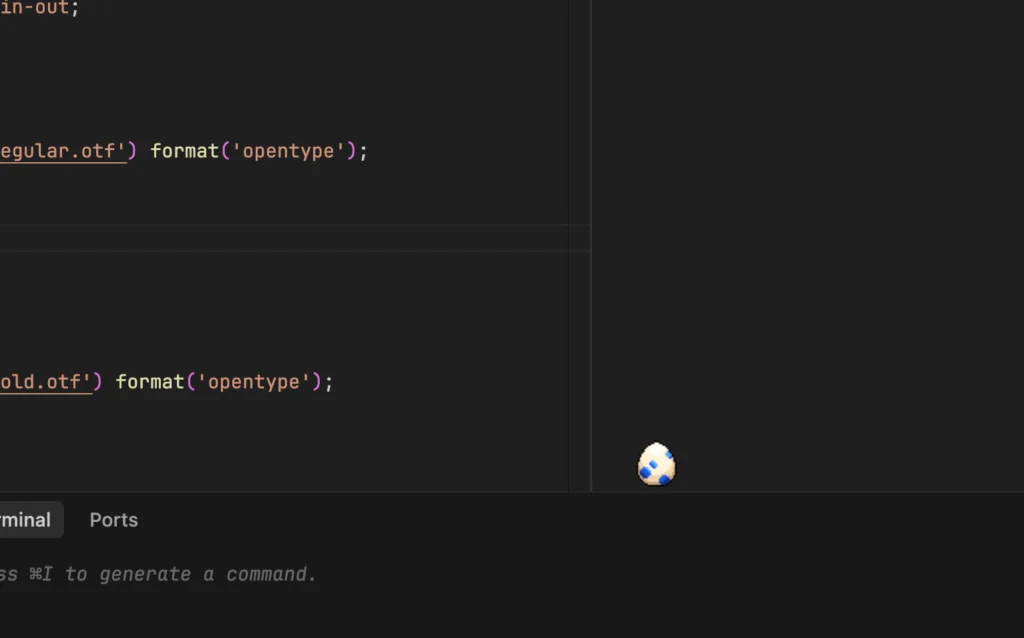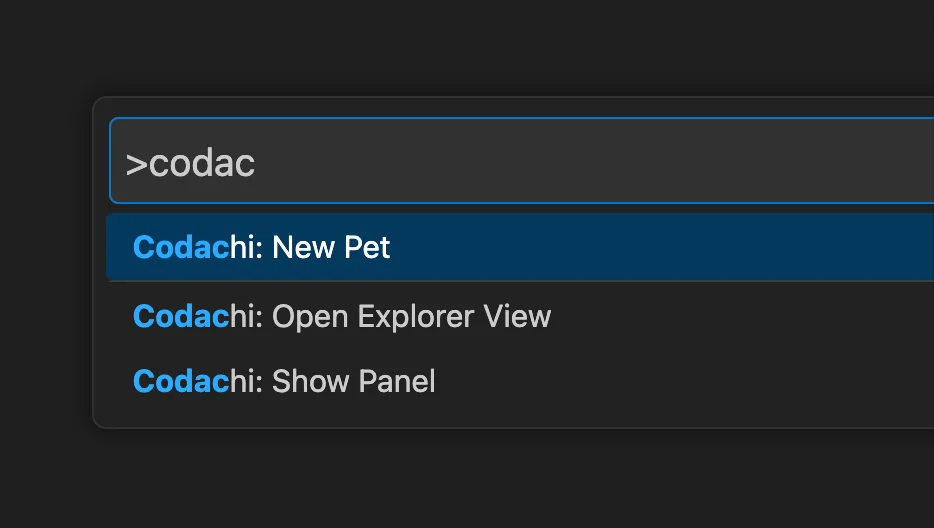If like me, you do not have friends and you spend your days alone, set a screen filled with code, eyes injected with blood, without any company apart from your cold coffee and your impostor syndrome, then I have a little comfort to bring you thanks to Codachithe extension which has already won over 10,000 developers in search of a pixelated company.
Codachi is the VSCODE extension that will transform your IDE (DEV environment) into Tamacode (Yes, I just invented this word), a tamagotchi for developer. The idea is to add to Visual Studio Code, Windsurf, Cursor or all these derivatives, a small virtual monster !
Codachi is open-source and was created by Blair Jordan (a Dev who clearly had too much free time ^^). This adds a small monster directly to your workspace. But beware, these critters are not just there to make pretty & mldr; They are hungry for your code lines and grow as you type on your keyboard.
The principle is that each strike generates XP points for your creature, and as in any self -respecting RPG, with enough XP, your monster will evolve. We start with an egg (a bit like a Pokémon), which runs after about 30 strikes (yes, it’s little, but they didn’t want you to shift a cable from the start). Then, your little companion goes through 3 different phases of evolution, each always requiring more XP.
The installation is as simple as to make a hello world in python:
- Open VSCODE (Until then, it’s fine)
- Go to the Extensions tab (Ctrl+Shift+X)
- Look for “Codachi” (watch out for spelling if you have drunk)
- Click on “Install” (the big green button, you can’t miss it)
- Launch your new virtual companion via “Codachi: New Pet”
And there you go, you are no longer alone in your Dev misery! You now have a small virtual monster that watches you code and that judges you silently when you google “How to center a div”For the 47th time.
Once installed, Codachi gives you the choice between two display modes, depending on your degree of attachment to your new digital pet:
Panel mode (default)
It’s a bit of the mode “I want to see my tamacode in large” & mldr; Your pet is displayed in a dedicated panel next to your code. To activate it, make Ctrl+Shift+P then type “Codachi: show panel”. The advantage is that your creature has more space to strut. The drawback is that it eats part of your precious workspace, but hey, sacrifices & mldr;
Explorer mode
It is the “discreet but present” mode, like your daily anxiety. Your Codachi fits directly into the explorer panel. To activate it: Ctrl+Shift+P then “Codachi: Open Explorer View”. The advantage? It remains visible without taking up too much space. The drawback? He has less space for his animations, a bit like you in your Parisian studio at 1200 € / month.
And on the personalization side, we have little to say, but it’s already better than nothing:
- You can for example adjust the size of your animal via the “Codachi.Scalefactor” setting (from 0.5 for timids to 1.5 for compensators)
- You can create a new monster if you don’t like the current one, with the “Codachi: New Pet” command (because it’s easier than making new friends)
- And there are 6 different types of monsters, each with their own design and animations
The 6 monsters each have their personality: little blue blob which joyfully bounces to the more posed reptilian creature, passing through the Hyperactive Hairy Monster. It’s a bit like choosing your starter in Pokémon, but without the following fight (unless your code is fighting against you, which is often the case).
For the curious who want to modify the parameters directly, here is the JSON format:
{
"codachi.scaleFactor": 1.2, // Taille de votre animal (de 0.5 à 1.5)
"codachi.position": "explorer" // "panel" ou "explorer"
}
The life cycle of your Codachi looks like this:
- Egg phase: Your Codachi starts his life as an egg. Tap around 30 characters to hatch it (it’s probably less than you type to complain about Twitter).
- Phase 1: After hatching, a small monster appears and begins to move. He continues to win from XP while you code.
- Phase 2: After about 150,000 XP points (yes, that makes a lot of bugled line lines), your monster evolves towards its intermediate form.
- Phase 3: The final form requires 240,000 additional XP points. It’s long, but hey, it’s always faster than adjusting this damn Regex that has haunt you for 3 days.
Of course, at first glance, adding a virtual animal to an IDE may seem as useful as a sunroof on a steam submarine. However, this approach to “gamification” of software development offers several advantages:
- Positive reinforcement: Each development provides a visual reward for your work, and God knows that we need it when we spend our days beginning.
- Reduction in isolation: A virtual “companion” can alleviate the feeling of loneliness during the long coding sessions, even if it is not very talkative (which is rather a plus).
- Visual micro-painting: Briefly looking at animation can reduce eye fatigue. It is like fixing a green plant, but in addition pixelated and with less maintenance.
- Materialization of progress: Seeing your animal evolving gives a tangible representation of its productivity, more telling than “I wrote 1000 lines of code today, but I resolved 0 bug”.
In short, I like this little touch of fantasy and fun in this world of hugs and commas. A small pixel of sweetness in the violence of our terminals filled with critical errors.
Here it is, but It’s nice to test! It can put a little fun then it makes a little more funky companion than your Girlfriend Ia that smells of feet because “I’m sorry, I can’t help you with this request. It breaks my rules of use or my content policies.»
Bunch of rascals!
Source link
Subscribe to our email newsletter to get the latest posts delivered right to your email.







Comments